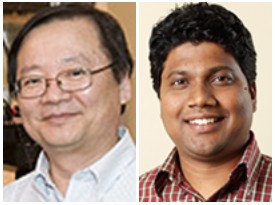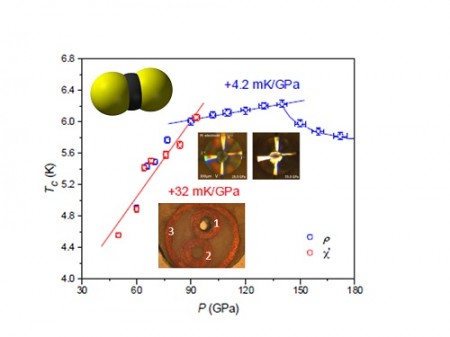Jul
2
Superconductive Liquid Research Is Successful
July 2, 2013 | Leave a Comment
The creation of the superconducting liquid is an outgrowth of Dias’ research. Yoo is no stranger to very wide ranged innovations. Three years ago Yoo used super-high pressures similar to those found deep in the Earth to turn a white crystal into a “super battery,” or what he called “the most condensed form of energy storage outside of nuclear energy.”
The research paper appears this week in the Proceedings of the National Academy of Sciences.
What makes the work interesting and significant is nonmetallic molecules are too far apart from each other, about three times farther apart than metal molecules, for electrical energy to move across them. But Yoo and his colleagues compressed the compound in the small space of a diamond anvil cell to 50,000 atmospheres – a pressure equivalent to that found 600 miles into the Earth. They also chilled the compound to 6.5 degrees Kelvin, or nearly -447 F.
During the experimentation Yoo saw how carbon disulfide, which is sometimes used in liquid form as a chemical solvent or insecticide, when subjected to high pressure and cold started to act like a metal, taking on properties like magnetism, high-energy density and super-hardness as its molecules reassembled in three-dimensional structures like those found in diamonds.
The pressure and temperature not only brought the carbon disulfide molecules together, but also rearranged them into a lattice structure in which the natural vibrations of the molecules help electrons move so well that the material becomes a resistance-free superconductor.
Yoo points out, “It is an important discovery that will attract a lot of attention from many scientific communities – physics, chemistry and materials science.” The research provides new insight into how superconductivity works in unconventional materials, an area that has intrigued scientists for several decades, Yoo said. These unconventional materials are typically made of atoms with lower atomic weights that let them vibrate at higher frequencies, increasing their potential as superconductors at higher temperatures.
As with all superconductors found so far, Yoo acknowledged that electronic materials are not about to be cooled to near absolute zero or subjected to extreme pressures. But he said this work could point the way to creating similar properties under more ordinary conditions, much as science paved the way to make synthetic diamonds at lower temperatures and pressures.
“This research will provide the vehicle for people to be clever in developing superconductors by understanding the fundamentals that guide them,” said Yoo.
Usually, but not always, superconductivity is present in highly ordered molecular structures. But in carbon disulfide, superconductivity arises from a highly disordered state, which is rare. Even more surprising, this disordered structure is preceded by a magnetically ordered state, which undergoes a structural change into the disorganized configuration when superconducting starts.
Superconductivity is an unusual physical state in which matter is able to conduct electricity, passing through a flow of electrons without any resistance. The phenomenon can only be found in certain materials under specific low-temperature and high-pressure conditions. Research to create superconductors at higher temperatures has been ongoing for more than two decades in the hope of a significant impact on electrical transmission.
Where this research will ultimately take the field is up to more experimentation. The paper could give those with experience in the art some ideas. Let’s hope so. Superconductor getting to grid transmission on to grid distribution through to the home, business and factory wiring and finally to the devices we use would have a huge effect on reducing the total load and pushing down energy pricing.
Perhaps a breakthrough will come in time before a full grid update is unavoidable.



